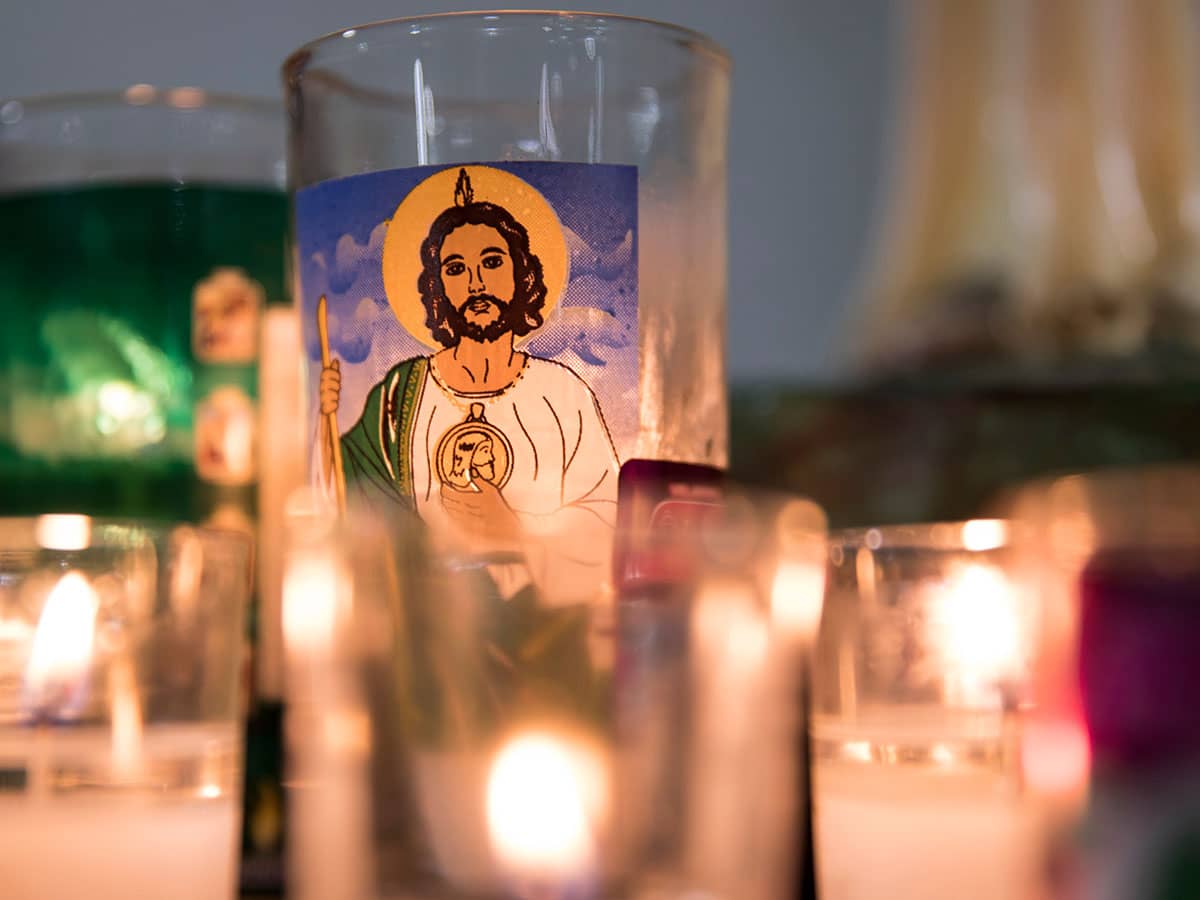St. Francis of Assisi, a Biography
By Wendy Murray
Francis of Assisi was, in his early life, a ladies' man, a carouser, a fierce warrior, and a P.O.W. Yes, that Francis of Assisi, who is also one of Catholicism's most beloved saints, known for his vow of poverty and prayer for peace.
Wendy Murray, a religion journalist, investigated the complex life of this very human man who became a saint, and tells his story in her new book, A Mended and Broken Heart: The Life and Love of Francis of Assisi (Basic Books). "Francis's life is a story of a complicated man, a true Italian among Italians, a poet, a warrior, a knight, a lover, a madman, and a saint," says the author. "It is a story about human love by lovers of God."
Discover the surprising story of Saint Francis.
He Was Originally Named John
At his birth in 1182, his mother had her new baby son baptized John (Giovanni), after St. John the Baptist. However, his father, Pietro di Bernardone, a rich cloth merchant who was away on business at the time, renamed him Francis (Francesco) because France was where he made his fortune.
He Disliked School
Francis attended school as a boy for only three years. He was a mediocre student and wrote Latin poorly until the day he died.
He Was Inspired by Arthurian Legends
As a youth Francis was greatly enamored by the French troubadour poets and their love songs about courtly women and great knights. He was known to sing troubadour songs in French and to aspire to knighthood and "courtly love," especially as depicted in Arthurian legends.
He Was a Playboy
Francis was handsome and wealthy, known to turn heads around Assisi because of his party-loving and outrageous lifestyle. His partying peers crowned him dominus (king), which meant he was king of the revels. He paid for extravagant banquets that included lots of drinking and women.
He Was a Warrior
In his quest for knighthood, Francis fought in two major wars. The first was Assisi's civil war in 1198. At age 16 Francis joined merchant-class warriors who fought against the nobility and razed the walls of the city's fortress. In the second war, four years later, he rode mounted and in armor to battle Assisi's rival neighboring town, Perugia. Assisi's army was slaughtered, but Francis survived and was taken as a prisoner of war.
He Nearly Died in Prison
His father was able to ransom him from prison a year later, having learned that Francis had contracted malaria and tuberculosis and was near death. His mother nursed him for another year before he regained his health, though both ailments would afflict him the rest of his life.
He Was a Failed Knight
He Fell in Love
His spirits revived, as noted by his friends, who talked of his having a girlfriend and a possible marriage, which Francis did not deny. Early biographers suggest this love was "Lady Poverty"--the name rendered for the vow of poverty he would later embrace. But Francis's testimony confirms he had not yet made any religious commitments at this time. This leaves open the possibility that the "girlfriend" was someone of flesh and blood. Francis described her as "more noble, wealthier, and more beautiful than you have ever seen." The description captures in every detail the then-blossoming and marriageable young woman of rank who, in time, would give her life to Francis. That is, Clare of Assisi.
He Stole from His Father
In time, Francis embraced a religious vocation that showed itself in serving the afflicted and impoverished, following Jesus' command to sell all, give to the poor, and follow him. Francis took linens from his father's shop, sold them, and gave the money sack to an aged priest who oversaw a crumbling church near town.
He Stripped Naked in Public
Francis's actions and religious life shamed and enraged his father. Assisi's bishop held a public trial during which Francis's father accused him of stealing. Francis returned the money and then stripped naked, returning his father's clothes as well. He publicly renounced his identity as his son.
He Rebuilt Ruined Churches
Without any intention of beginning an order, Francis began to rebuild three ruined churches. The first was called San Damiano, which he announced publicly was intended for women. A few years later, his friend Clare of Assisi joined Francis and lived there. The second site, the Portiuncula, would become the seat of the order he would eventually found. (The third church has not been preserved.)
He Conspired with Clare
Francis orchestrated Clare's secret escape from her family home, and met her in the field below town late at night after she ran away. He then took her to the Portiuncula and cut her hair as a sign of her religious vows. She became the founder of a women's order based on Francis's model, the Order of Poor Ladies, later called Poor Clares.
He Befriended Muslims
Once his following had become officially sanctioned by the Mother Church in Rome, he and his brothers went on foot all over Italy. In 1219, Francis traveled the seas on the Fifth Crusade to gain a hearing with the Muslim leader Malik al-Kamil. The little friar and the great Muslim military leader became friends. Some credit this friendship for prompting al-Kamil, ten years later, to concede freely Jerusalem to the Christians.
His Own Order Rejected Him
By the end of Francis's life, his own order had refused to accept his strict interpretation of the simple Gospel. Only a few devoted brothers and, of course, Clare, remained faithful to his ideal. At this time in his life, his body already wasted by a multiplicity of illnesses, he received marks known as stigmata (the five wounds of Christ). Blind and in agonizing pain, Francis died at the Portiuncula in 1226 at the age of 45.

